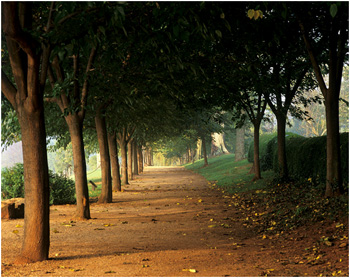What was Mulberry Row?
Let’s begin with what Mulberry Row wasn’t.
It was not a long line of slave cabins standing in the shadow of the main house. It did not stay the same during Jefferson’s lifetime. It was not an invisible or unimportant part of the Monticello plantation. Those are some common misconceptions about Mulberry Row.
Now let’s move on to what it was.
Mulberry Row was the dynamic, industrial hub of Jefferson’s 5,000-acre agricultural enterprise. It was the center of work and domestic life for dozens of people -- free whites, free blacks, indentured servants, and enslaved people. It was populated by more than 20 dwellings, workshops, and storehouses between 1770 and the sale of Monticello in 1831. It was a manifestation of Jefferson’s intellect -- his creative solution to improve his plantation and meet its demands.
Jefferson’s various names for this place -- “Mulberry-row” in 1782, “Mulberry Lane” in 1793, and “Mulberry walk” in 1808 -- imply that it was simply a plantation road named for the pairs of mulberry trees planted alongside it. But for the people who lived and worked there, it was much more. For the young Isaac Granger, it was where he lived with his parents, Ursula and George, and then later worked, manning the tinsmithing operation in the “storehouse for iron.” For Richard Richardson, who lived for a time in the “workmen’s house,” it was a place that he served as brickmason, plasterer, and overseer before heading to Jamaica, where he inherited property from a rich uncle. For George Bradby, a free black man, it was the place where he lived with his enslaved wife, Jenny, while also working for Jefferson.
Many such stories have yet to be told. But in this blog, on this website, and in a permanent exhibition on the mountaintop, we will illuminate Mulberry Row’s lost buildings as well as the lives, families, and work of scores of people.



